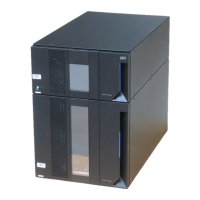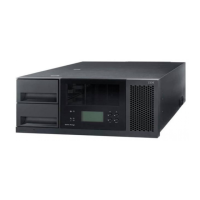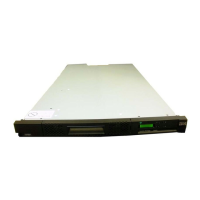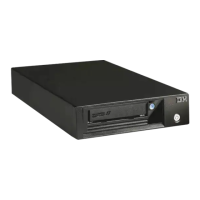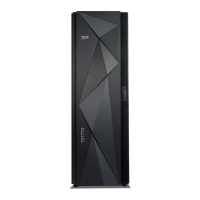Two types of path failover capabilities exist: control path failover (CPF) and data path
failover (DPF). Control refers to the command set that controls the library (the SCSI
Medium Changer command set on LUN 1 of the tape drives). Data refers to the
command set that carries the customer data to and from the tape drives (the
SCSI-3 Stream Commands (SSC) device on LUN 0 of the tape drives). Path failover
means the same thing in both: that is, where there is redundancy in the path from
the application to the intended target (the library accessor or the drive mechanism,
respectively), the device driver transparently fails over to another path in response
to a break in the active path.
Both types of failover include host-side failover when configured with multiple
HBA ports into a switch, but CPF includes target-side failover through the control
paths that are enabled on more than one tape drive. DPF includes target-side
failover for the dual-ported tape drives that are supported by the TS3500 Tape
Library.
DPF includes load balancing of the HBAs because the channel is a data-intensive
path (the control path carries very little data, so load balancing is not an issue).
The dynamic load balancing support optimizes resources for devices that have
physical connections to multiple HBAs in the same machine. When an application
opens a device that has multiple HBA paths configured, the device driver
determines which path has the HBA with the lowest usage and assigns that path to
the application. When another application opens a different device with multiple
HBA paths, the device driver again determines the path with the lowest HBA
usage and assigns that path to the second application. The device driver updates
the usage on the HBA assigned to the application when the device is closed.
Dynamic load balancing uses all HBAs whenever possible and balances the load
between them to optimize the resources in the machine.
Both CPF and DPF require the use of the IBM device driver, and are supported
exclusively with products that bear the IBM logo on the operating systems
indicated in Table 13.
Table 13 summarizes the differences between CPF, DPF, and load balancing.
Table 13. Differences between DPF and CPF
Characteristic CPF
DPF and Load
Balancing for
Ultrium 2 and newer
tape drives
DPF and Load
Balancing for 3592
tape drives
Device type SMC
1
SSC
2
SSC
LUN
3
LUN 1 LUN 0 LUN 0
Host-side failover Yes Yes Yes
Target-side failover Yes Yes
7
Yes
IBM device driver required Yes Yes Yes
Operating systems supported AIX
®(R)
, SuSE
Linux
(TM)
, Red Hat
Enterprise Linux,
Solaris, Windows,
HP-UX, Asian UX
AIX, SuSE Linux, Red
Hat Enterprise Linux,
Solaris,
Windows
4
(DPF only),
Asian UX
AIX, SuSE Linux, Red
Hat Enterprise Linux,
Solaris, Windows
4
(DPF only), HP-UX,
Asian UX
Order feature to obtain license key Yes Yes
5, 6
No
SCSI attachment supported Yes No No
Fibre Channel attachment supported Yes Yes Yes
52 IBM System Storage TS3500 Tape Library with ALMS: Introduction and Planning Guide
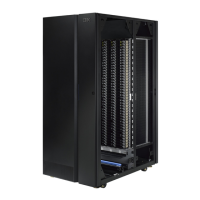
